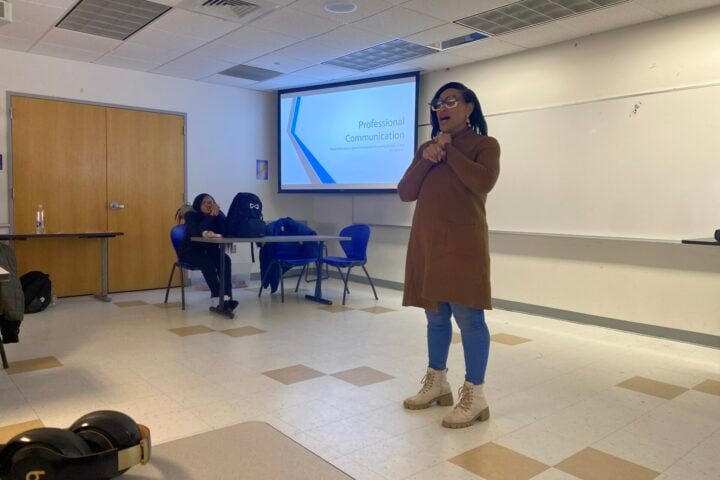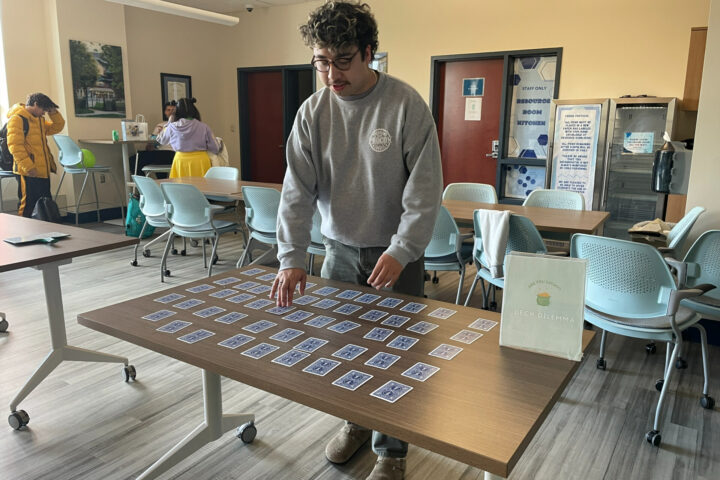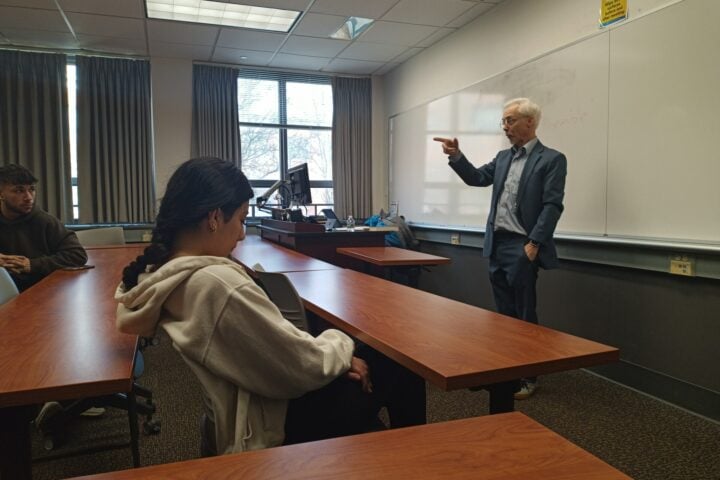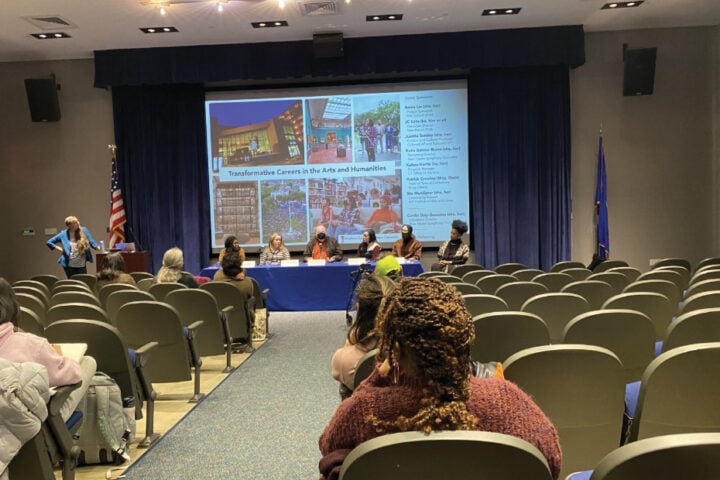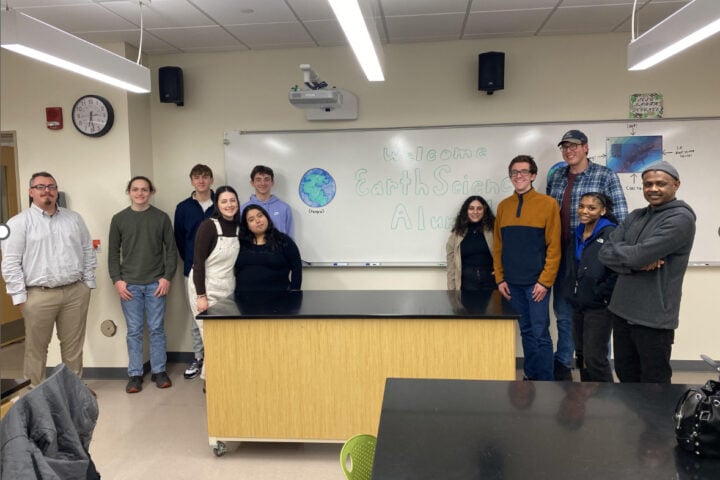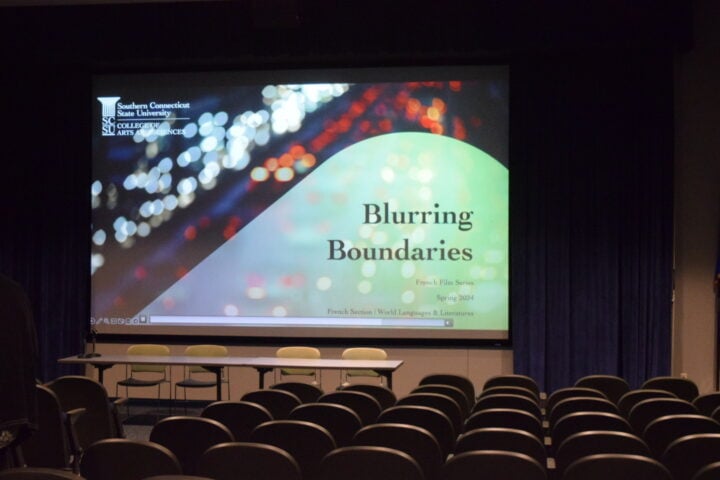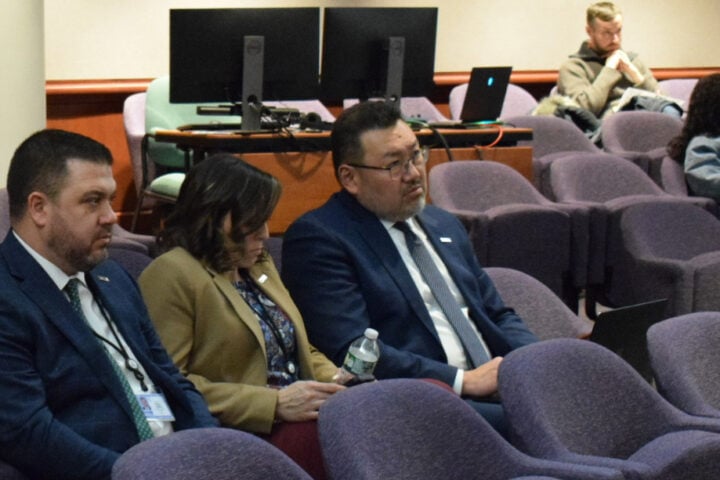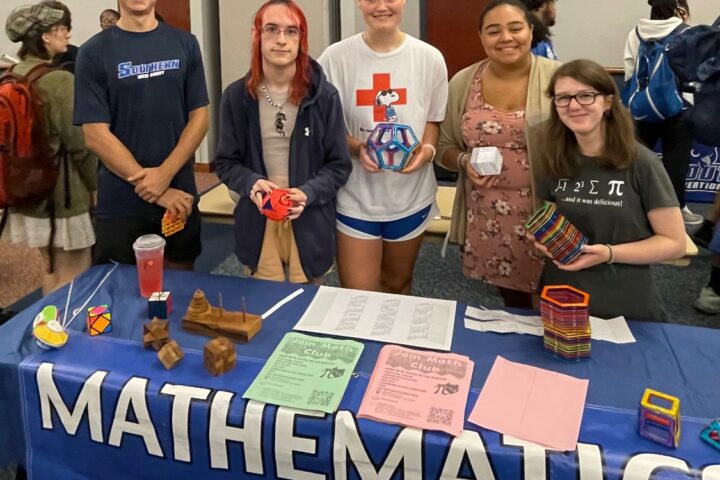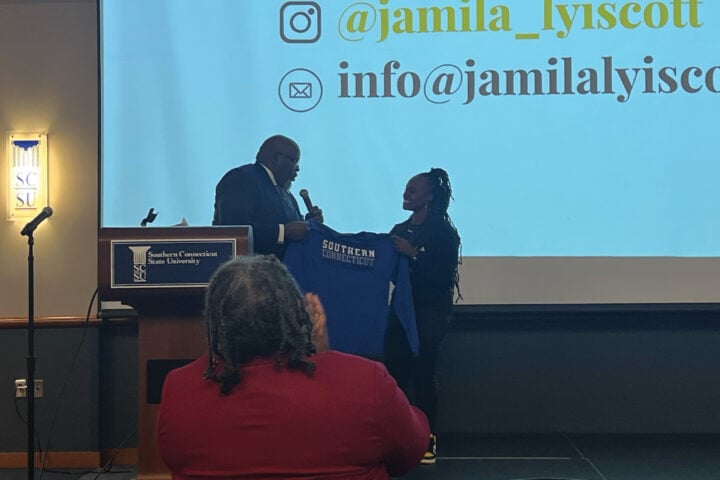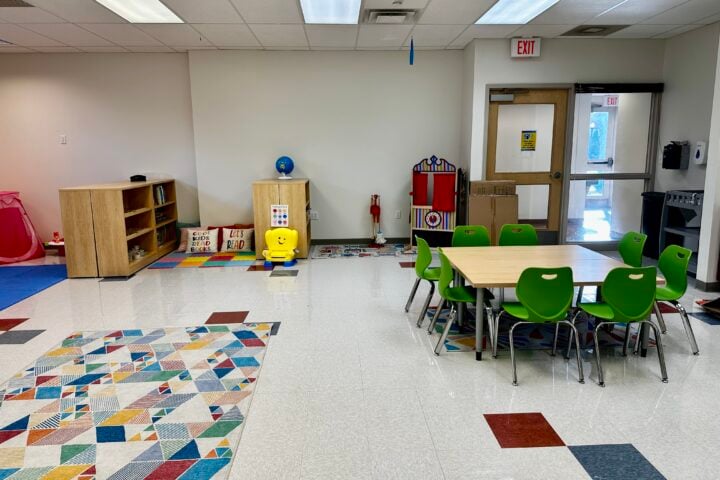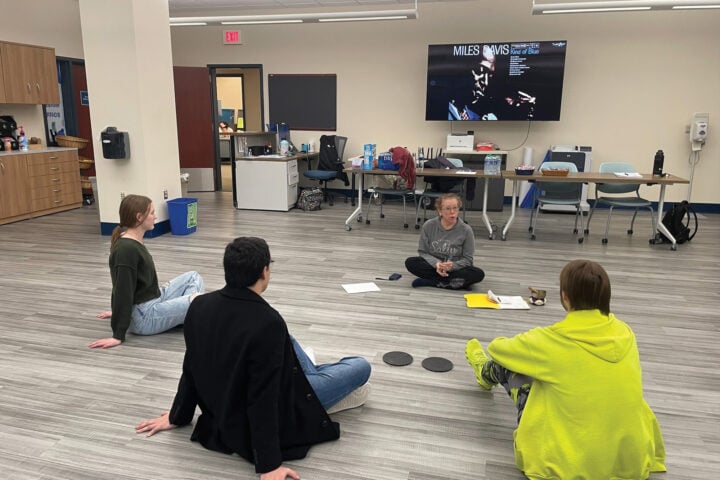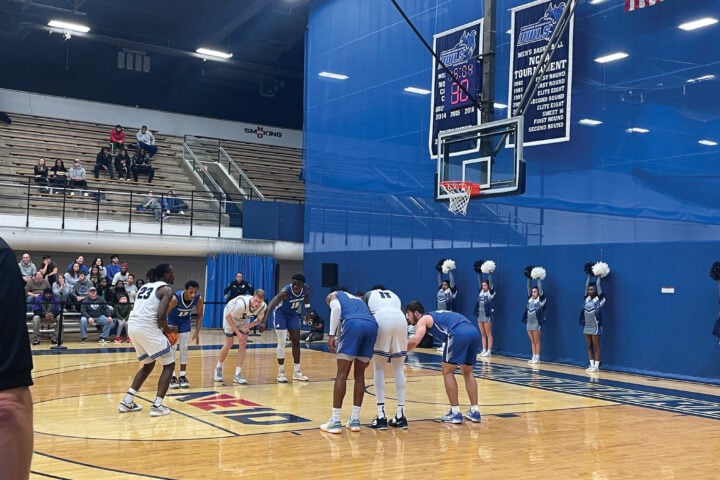Haljit Basuljevic—Reporter
What is deemed as revolutionary in Applied Physics and Materials Science, Yale Research Scientist Adrian Gozar shows how borophene’s stubborn structure has been finally been broken through.
For years, synthesizing borophene has remained an enigma for scientists. The discovery of its close cousin graphene, a composite material immensely stronger than steel and has conductive to heat, have provided the world with longer lasting LED lights, faster DNA sequencing and more efficient solar panels.
Borophene, Gozar said to an audience of over 15 in Jennings Hall, is the next step in further the advancement of technological applications. In a number of slides that enthusiastic students can appreciate, Gozar said that the hexagonal network between boron atoms make it possible to easily manipulate, which makes it more flexible than graphene and unique compared to other materials.
In one slide, Gozar points to a 2D honeycomb that is representative of the borophene structure. Periodically, borophene also has an extra boron atom in the center of the hexagon. The crystal structure tends to be stable when occasional center positions are occupied and others are vacant.
According to theory, vacancies can stay fixed but their arrangement does not have to. This means that as long as there is minimal stability by the number of vacancies distributed, borophene can be rearranged.
The challenge that stupefied them for years
was that the crystal structure of boron was much too small to be altered, Gozar said. Electronic applications, like microchips, use these high-quality crystals, which must be distributed over a large surface area as it grows. In order for borophene to make impact upon the macro-scale, it must have a substrate (material) to grow larger.
Gozar said that one of the approaches at tackling this issue was an attempt at synthesis upon ultrathin metallic sheets. First, they had tried this on silver surfaces at various temperatures. The problem with this, Gozar noted, was that the patterns for boron crystals were nanometers in size– much too small for any real manipulation. He said that applying copper enlarged the crystals, thus satisfying the requirements.
Gozar added that the next step was to transfer the borophene layers from the metallic surfaces they have been experimenting on to more electronic substance materials. He also said that such research for quantum materials is a thing of the future, especially the
theoretical possibilities of quantum computers.
“Imagine a system where you tell someone the password. Which would take 100 years on a regular computer to solve, “ said Gozar, “but then a quantum computer. which can can be at several states at the
same time. So, it can have very relevant technological advantages.”
Gozar said that he had been presenting bits and pieces of his school’s research, and added that there has been an international effort in working towards innovative advancements of material science.
“So, we were thrilled to have him at Southern,” said Christine Broadbridge, executive director of Research and Innovation at SCSU, “This is really cutting-edge research in terms of quantum materials. Revolutionary in terms of technology. So, it’s been many years that we’re trying to get, really, meet some of these challenges, right? Come up with new materials.”
























